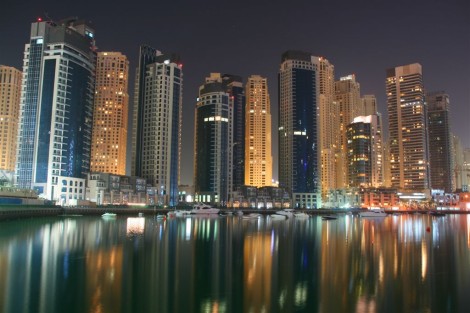As part of our Fashion Means Business blog series in celebration of the launch of our Fashion Business School, we are exploring some of the key issues in fashion business.
This time, MA Fashion Retail Management student Dania Istaitie takes a look at luxury retail in the Middle East.
Guest blog: Dubai the New Fashion Hub
The Middle East and luxury are virtually synonymous. Within this region, Dubai is the fashion dynamo. Known as the ‘New York’ of the Middle East, the city’s spectacular skyline and sumptuous lifestyle has made it a vital destination for international retailers. Dubai is home to over 200 nationalities, and for over 1.1 billion people in India, Africa, and the rest of the Middle East, the city is their ‘Milan’. As the fashion industry in the region expands, tourism amplifies. Tourists make up over 40% of luxury global spend, with a forecasted steady growth in luxury consumer spending.
![By David Pin (Ddpn, http://www.ddpn.net) (Own work) [CC BY 2.0 (http://creativecommons.org/licenses/by/2.0)], via Wikimedia Commons](https://www.arts.ac.uk/__data/assets/image/0020/127316/Dubai_marina2-470x313.jpg)
By David Pin (Ddpn, http://www.ddpn.net) (Own work) [CC BY 2.0 (http://creativecommons.org/licenses/by/2.0)], via Wikimedia Commons
To further uplift its financial state and opulence the city has high hopes on being a dominant player in the multi-billion dollar fashion industry. Currently, the Dubai Shopping Festival, Fashion Forward event, and the Dubai Design District instigating and cultivating local talent within the region, are all set up to drive forward the entirety of the fashion industry. But Dubai continues to strive forward in its pursuit to be the world’s number one fashion destination.
As Dubai awakens from its economic crisis, international fashion retailers will continue to capitalise on the rebounding economy. With augmenting disposable incomes, correlated with high consumer purchasing power, competition in the region is becoming very intense. international retailers entering the country are required to have a local partner, which are entitled to distribute the brand in the UAE.
The large legal requirements involved in making an entrance into the market, may hinder the entry for international retailers in the future. By penetrating the market through a joint ventures or franchise, international fashion retailers may face issues with their partners on the values they are bringing to the brand, and the roles that are delegated to each party. Franchise disagreements, and the vast difference in culture- both religion and language may complicate matters for international players expanding in the region. This may later evolve to cover the up-and-coming online pure players entering the fast growing e-commerce market. This is UAE’s effort to smooth the way for local expertise.
Women in the region, who contribute to the majority of consumer luxury spending in the region highly, prioritise fashion. In hope of establishing a unique fashion identity, the Dubai Design District will continue to foster local designers and underwrite the blooming trend and interest in local brands. With more lenient regulations and undermining support from the region, local talent from South Asia to North Africa will come to fruition. In efforts to create a fortifying local fashion industry, Dubai will continue to scout young affluent designers from within the region and within close proximity to the UAE. Tourists will come to the region in search for a unique product, and Arabs will value locally made products, which could hinder Western brand’s growth in the region. It will not come as a shock to see Arab women dressed from head to toe in local brands, as opposed to western brands like Prada, Chanel, and Saint Laurent.
Although Dubai will continue to collaborate with designers across the globe, it will focus more critically on nurturing local talent. But in the case of Dubai, fashion means business.
Words by Dania Istaitie, MA Fashion Retail Management

